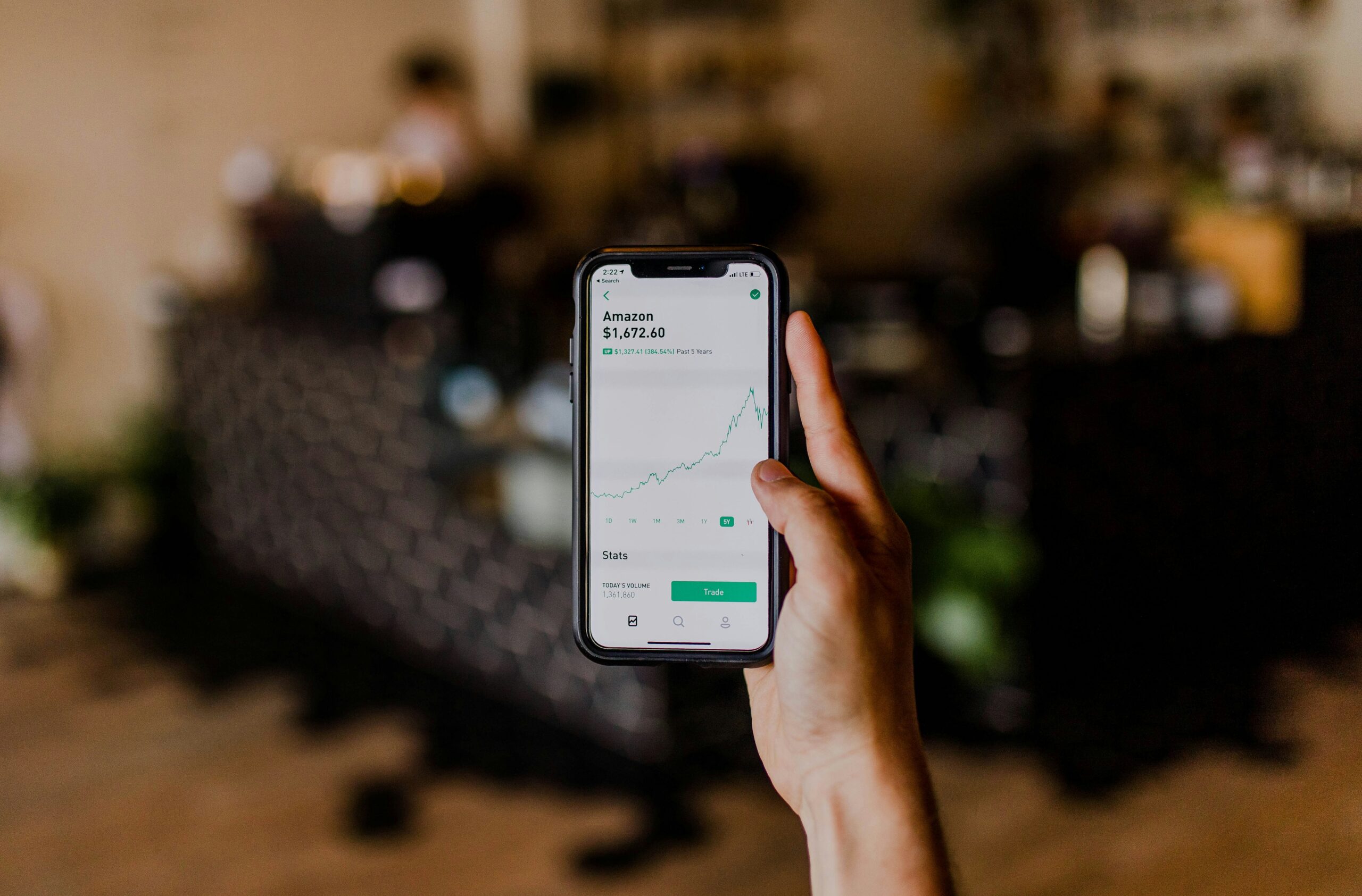Unlock Growth Potential: Best Strategies for Money Market Account Interest Rates
Understanding Money Market Accounts
Introduction to Money Market Accounts
A money market account (MMA) is like a financial superhero, blending the powers of checking and savings accounts. It’s designed for folks who fancy keeping their money handy but also want their cash to earn some interest. Picture this: you’ve got check-writing powers and a debit card just like with a regular checking account, but with interest rates that make a savings account look like it’s standing still. Need more nitty-gritty on MMAs? Check out our handy guide on what is a money market account.
| Feature | Money Market Account |
|---|---|
| Interest-Bearing | Yes |
| Check-Writing Privileges | Yes |
| Debit Card Access | Yes |
| FDIC Insured | You bet! |
Money market accounts often flaunt tiered interest rates, meaning the more dough you park, the more you earn. Keep your balance chunky, and you could rake in a higher Annual Percentage Yield (APY). Neat, right? U.S. Bank has more on these sweet deals.
Benefits of Money Market Accounts
Why would you want an MMA? Well, let’s break it down. This account is a top pick for those with short-term savings plans because it lets you use your cash while it grows.
-
Higher Interest Rates: MMAs generally kick out better rates than your usual savings account. Imagine snagging between 3.50% and 5.00% APY (CNBC). Cha-ching!
-
Convenient Access: MMAs are all about flexibility. You can write checks, dabble with a debit card, and raid ATMs, unlike standard savings accounts where your money’s more locked up (Investopedia).
-
Federal Insurance Protection: MMAs come with an FDIC safety net, like wearing a financial seatbelt. This protection gives you peace of mind knowing Uncle Sam’s got your back, safeguarding your savings.
-
Suitable for Various Savings Goals: Whether you’re stashing cash for a quick getaway or building an emergency fund, MMAs are versatile financial pals for various goals (Citizens Bank).
Consider a money market account, and you might find a fantastic balance between building up your savings and keeping cash on hand for day-to-day expenses. Conflicted between an MMA and a savings account? Our showdown on money market account vs savings account has you covered.
Factors Affecting Money Market Account Rates
Getting the scoop on what makes money market account rates tick can help folks choose wisely about where to stash their savings. Let’s dive into what really makes these rates go up and down.
Relationship to Federal Reserve Rates
Money market account rates dance to the tune of the Federal Reserve (the Fed). Lately, the Fed’s been on a spree, hiking up the federal funds rate a bunch of times through 2022 and 2023. This little rate hike party has given a boost to the returns you see on money market accounts and other goodies. But hold on—when inflation slows its roll and gets comfy around that 2% mark the Fed likes, expect a change. They’ve been whispering plans to trim those rates—talks of a few chops in 2024 could have money market accounts doing a bit of a shuffle, too (Business Insider).
Comparison with CD Rates
Making your money work is all about knowing your options. So, pit money market account rates against what certificates of deposit (CDs) throw at you. Money market accounts flirt with higher rates than your typical savings bunch, thanks to their adventures in short-term securities. But, high-yield savings and CDs might edge them out in the interest game. To make the right call on parking your cash, you gotta weigh these options.
Here’s the quick and dirty on average rates:
| Account Type | Average Interest Rate (%) |
|---|---|
| Money Market Account | 0.75 – 1.25 |
| Traditional Savings Account | 0.05 – 0.10 |
| High-Yield Savings Account | 1.50 – 2.00 |
| Certificates of Deposit (CDs) | 1.00 – 2.50 |
Influence of Inflation
Inflation—it’s that sneaky force that eats away at what your dollar can do. When it climbs, the Fed often pumps the brakes by hiking rates, and that can mean a plus for money market rates. But when inflation chills out, the interest rates might coast downhill. Keeping an eye on inflation’s roller coaster can help you figure how money market accounts will reward you.
These accounts aren’t just about stashing cash—they throw it into short-term debt like CDs and government securities, which can yield higher rates than your standard savings account. This makes them a popular pick for folks eager to beef up their savings (what is a money market account, how does a money market account work, money market account vs savings account).
Choosing the Right Money Market Account
Picking out a snazzy money market account isn’t just about flipping a coin—it means weighing up things like whether you’re dealing with an online bank or the good old-fashioned kind, such as credit unions, and figuring out what kind of interest rates they’ve got in their pockets ready to go.
Considerations for Brick and Mortar vs. Online Banks
When you’re stuck making that choice between the local guy on the corner or the digital charmer on the web, remember: online banks are usually tossing better interest rates your way. Why, you say? When they don’t have a building or a branch to worry about, it costs them less, and guess who gets the savings? Yep, you do. On the other hand, the traditional banks might cut you deals face-to-face, but they’re not as generous with the rates.
Here’s how they stack up:
| Feature | Brick and Mortar Banks | Online Banks |
|---|---|---|
| Interest Rates | Usually on the skimpy side | Typically juicier |
| Accessibility | Chat face-to-face | Click away to your heart’s content |
| Fees | Might surprise you with a few more | Generally fewer |
| Convenience | Folksy interaction | Available anytime you feel like it |
Wanna compare those average rates? Take a gander at our scoop on best money market account rates.
Evaluating Credit Unions for Account Options
Credit unions? They’re like the cool cousin of banks. They dish out fat interest rates, but you’ve gotta meet their club rules to get in. These places tend to pamper their community with better service and those money tricks only your grandpa knows about.
Thinking about jumping on board a credit union? Check these out:
- Membership Requirements: Do you need to be from a certain place, work at a certain job, or know a secret handshake?
- Interest Rates: See how their percentages match up with the big players in town.
- Fees: Sneak a peek at any charges lurking in the fine print or check if they need your balance to stay above water.
Credit unions got their perks, but you’ll need to do a bit of detective work compared to punching your ticket at regular banks. Wanna know the nuts and bolts? Dive into our piece on how does a money market account work.
Understanding Average Interest Rates
Interest rates ain’t what they used to be—they bounce around depending on which place is counting your dollars and the whole economy thing. A lot of these accounts want you to stump up a bit more cash upfront—like around $2,500—if you wanna hit the big league rates (Citizens Bank).
Here’s the lowdown on the average interest rates across board:
| Institution Type | Average Interest Rate (APY) |
|---|---|
| Traditional Banks | 0.05% – 0.20% |
| Online Banks | 0.20% – 1.00% |
| Credit Unions | 0.50% – 2.00% |
Money market accounts sometimes throw out better interest rates if your balance makes them happy. Curious how these stacks up against savings accounts? Have a squiz at our tale on money market account vs savings account.
By weighing up all these tidbits, you can figure out which money market account strums your financial guitar just right.
Opening a Money Market Account
Thinking about opening a money market account? It’s a smart move for folks eyeing financial growth with better interest rates while keeping flexible access to their cash. Knowing the basics like the minimum deposit, balance requirements, security details, and how interest works helps in making the best choice.
Minimum Deposit and Balance Requirements
Usually, cashing into a money market account means dealing with some starter requirements. These vary from one place to another but generally involve putting down an initial deposit. Here’s a snapshot of what different places usually ask for:
| Place | Minimum Starting Cash | Minimum Remaining Cash |
|---|---|---|
| Regular Banks | $1,000 – $2,500 | $1,000 – $5,000 |
| Online Banks | $100 – $1,000 | $0 – $1,000 |
| Credit Unions | $500 – $1,500 | $0 – $2,500 |
Many of these accounts give a little extra love to folks with higher balances by upping the interest rates. That means more money coming in as the balance grows. It’s worth checking the best money market account rates out there to align with personal money goals.
FDIC Insurance and Security
Feeling safe about money parked in an account comes down to FDIC insurance. Banks offering money market accounts carry insurance from the Federal Deposit Insurance Corporation, covering you up to $250,000 per person per bank. Joint accounts? You might see coverage up to $500,000. Got more cash stashed away? Spread it across multiple banks or credit unions to stay fully insured (Investopedia).
Before handing over any money, double-check that your bank’s FDIC badge is in place—keeping your cash secure is top priority.
Interest Calculation and Payment
Interest on these accounts isn’t a static number. They dance around according to market whims and the maturity dates of underlying assets, often landing lower than some other investment picks (Investopedia).
These accounts use Annual Percentage Yield (APY) to figure interest, and the more you stash, the better your APY gets. Pay attention to how often your bank gives out the interest—monthly, quarterly, or annually—because it changes your returns.
Deciding between money market and savings accounts? Think about your priorities. If a money market account sweetens the deal with higher interest and extra perks like check-writing abilities, it’s probably the way to go (NerdWallet).
For a closer look at money market accounts and how they operate, check out what is a money market account or learn more with how does a money market account work.
Comparing Money Market Accounts with Savings Accounts
When folks are picking out how to stash their cash, a hot topic is how money market accounts (MMAs) stack up against the good ol’ savings account. Knowing their main differences can really help you figure out the best spot to plop down your dough and watch it grow.
Interest Rate Variability
A biggie that sets money market accounts apart from savings accounts is the interest rate game. MMAs usually dish out juicier rates in comparison to what’s dished out by your average savings accounts. Right now, you might see a money market account offering a rate hovering around 0.66% APY for balances between $10,000 to $100,000. Of course, these numbers might do a little dance as market winds change (Business Insider).
| Account Type | Average APY |
|---|---|
| Money Market Account | 0.66% |
| Traditional Savings Account | Varies, typically lower |
Now, high-yield savings accounts might beat money markets in interest battles at times, but MMAs are still solid if you’re after a decent growth with some wiggle room.
Check-Writing and Debit Card Features
Something that makes money market accounts pop is their blend between saving and spending. They let you write checks and often throw in debit card perks. Being able to crack out a check or swipe a card brings flexibility to the table for your everyday cash needs. Standard savings accounts? Not so much; they’re usually check-and-card shy.
| Feature | Money Market Accounts | Savings Accounts |
|---|---|---|
| Check-Writing | Yep | Nope |
| Debit Card Access | Sure | Limited or None |
| Higher Interest Rate Potential | Yup | Typically lower |
But before you jump in, know that money market accounts might ask for a bigger deposit to join the club and they keep a close eye on how often you move money around each month.
Tax Implications of Interest Earnings
Another thing on the checklist: taxes. Both money market and savings accounts will add to your federal income tax tab with interest earnings showing up as ordinary income. Track any money your money makes because Uncle Sam expects a 1099-INT form from the bank if you make over $10 in interest for the year. Keeping this in mind is key for not stepping on the taxman’s toes.
So, picking between a money market and a savings account boils down to your game plan: needing quick cash access, shooting for particular interest preferences, or how loose you want your transactions to be. If you need more deets on this money decision, holler at our article on money market account vs savings account.
Making Your Money Market Account Work for You
Want to squeeze every penny out of your money market account? Look no further, here are the tricks you need. We’ll chat about using checks and debit cards, handling those pesky minimum balance requirements, and cracking the code on interest rate tiers.
Writing Checks and Swiping Cards
So, you’ve got yourself a money market account. Congrats! You now can write checks and swipe debit cards just like you would with a regular checking account. It’s kind of like having your cake and eating it, too. According to U.S. Bank, the combo of savings with convenient spending makes it worth it. While traditional high-yield savings accounts might not give you easy access to your money, your trusty money market account certainly does (CNBC Select).
Juggling Minimum Balances
Keeping up with minimum balance requirements might feel like doing a tightrope walk, but it’s so worth it. Many of these accounts have a minimum threshold, like $2,500, that you need to meet to dodge those annoying monthly fees and snag better interest rates (Citizens Bank).
| Minimum Balance | Monthly Fees (if below) | Interest Rate |
|---|---|---|
| $2,500 | Zip | Higher than the usual |
| Below $2,500 | $15 | Just the regular rate |
Parking your money above this balance means you’re not just avoiding fees but also enjoying that sweet interest rate.
Decoding Interest Rate Tiers
Now, let’s talk shop about interest rate tiers. Money market accounts typically offer a juicier interest than your run-of-the-mill checking or savings account. But, the rate you get might switch up based on how much you keep in there.
| Balance Tier | Interest Rate |
|---|---|
| $2,500 – $10,000 | 0.50% |
| $10,001 – $25,000 | 0.75% |
| $25,001 and above | 1.00% |
That means, the more you stash away, the more your green grows.
Keeping these strategies in your back pocket can really give your money market account a boost. Curious for more details? Check out our insights on what is a money market account and how does a money market account work.







